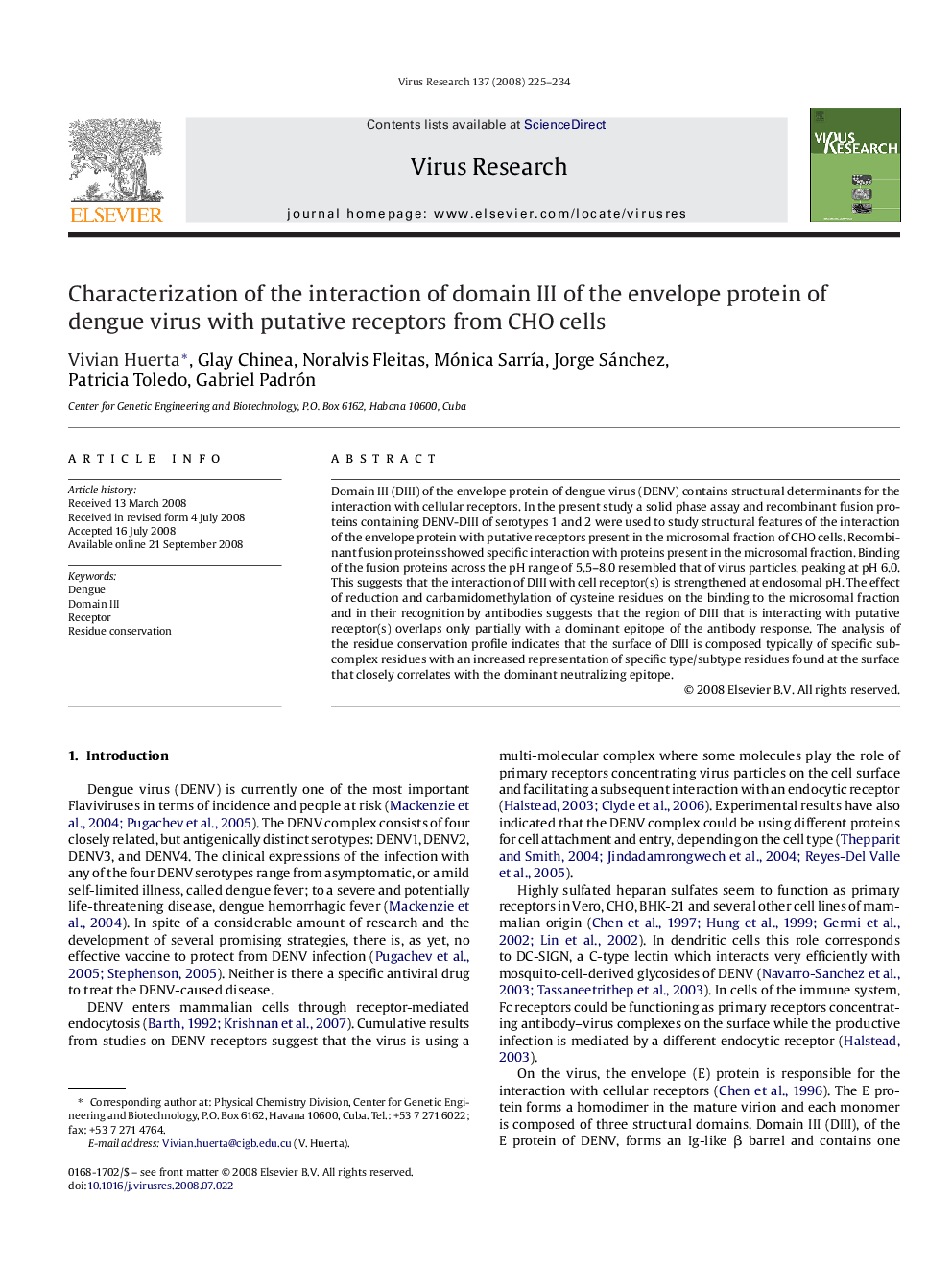| Article ID | Journal | Published Year | Pages | File Type |
|---|---|---|---|---|
| 3430151 | Virus Research | 2008 | 10 Pages |
Domain III (DIII) of the envelope protein of dengue virus (DENV) contains structural determinants for the interaction with cellular receptors. In the present study a solid phase assay and recombinant fusion proteins containing DENV-DIII of serotypes 1 and 2 were used to study structural features of the interaction of the envelope protein with putative receptors present in the microsomal fraction of CHO cells. Recombinant fusion proteins showed specific interaction with proteins present in the microsomal fraction. Binding of the fusion proteins across the pH range of 5.5–8.0 resembled that of virus particles, peaking at pH 6.0. This suggests that the interaction of DIII with cell receptor(s) is strengthened at endosomal pH. The effect of reduction and carbamidomethylation of cysteine residues on the binding to the microsomal fraction and in their recognition by antibodies suggests that the region of DIII that is interacting with putative receptor(s) overlaps only partially with a dominant epitope of the antibody response. The analysis of the residue conservation profile indicates that the surface of DIII is composed typically of specific sub-complex residues with an increased representation of specific type/subtype residues found at the surface that closely correlates with the dominant neutralizing epitope.
